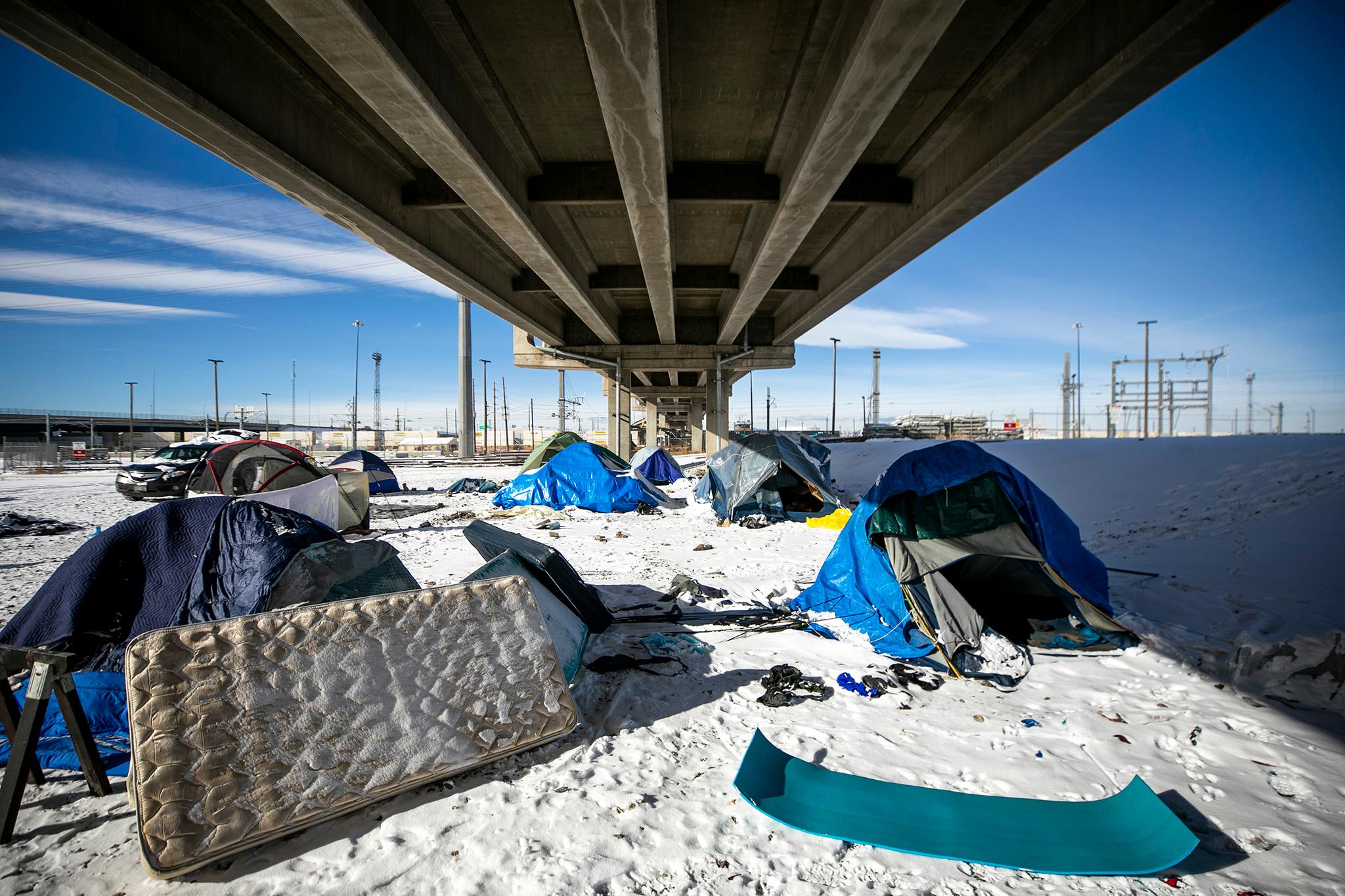Two city employees were sent to El Paso, Texas, Wednesday morning to let new immigrants and local Texas nonprofits know that Denver isn’t the city it was at the height of the migration influx.
Today, Mayor Mike Johnston announced the Denver Asylum Seeker Program, the city's new migrant response. The city is pivoting from its emergency sheltering system and focusing on providing new immigrants with housing, rent and food assistance and job training for six months.
The program will have a cap of about 1,000 people and it will start with those currently in the shelter system, which is around 800 people.
For those who arrive after April 10, if the program doesn’t have space they will be placed into congregate shelter for 24 to 72 hours. From there, they’ll be directed to outside services, connected with relatives in Denver if they have them or given the opportunity to move on to a new city.
This is a large change from the costly emergency sheltering program.
With the change, Denver Human Services sent two employees to El Paso to speak with newcomers and nonprofits there about what coming to Denver will mean for them now.
Jon Ewing, a spokesperson for DHS, said the city workers were to sent to El Paso to provide “a personal touch” and let people know that “the program is not the same today as it was yesterday.”
“We don't want a family to come to Denver and think, OK, Denver is offering six weeks of shelter,” Ewing said “We want them to know immediately. This is what the program is now… We find that it's best that people start planning ahead of time. It's just making sure that everyone's on the same page.”
Denver isn’t the first city to send employees to El Paso.
Ruben Garcia is the founder and executive director of Annunciation House, one of the largest shelters in El Paso. He said city employees in Chicago and New York have also gone down to Texas to “help coordinate” and also “discourage people.”
“They’re basically saying, ‘You know, in the beginning, we were doing everything in our power to be as helpful as possible, and now we feel that all the resources that we were able to marshal are spent. We’re not sure how much more we can offer you,'” Garcia said.

Garcia said he understands the tactic but it’s not going to stop people from heading to these cities.
Ewing said the move is more to inform people rather than deter them, especially with the way miscommunication can spread. He points to when new immigrants were told New York was offering work authorizations, bypassing federal law. New York Gov. Kathy Hochul attempted to issue state work permits but ultimately couldn’t.
“We just don't want people arriving in Denver and having the wrong idea of what shelter services they're going to receive and then that's screwing up their plans,” Ewing said. “We're never going to turn anyone away. But when it comes to what is actually being offered in the shelter program, that's just all it is. If you come here, know what you're going to get.”
Denver has assisted over 40,000 new immigrants, spending about $68 million, mostly on shelter.
In the beginning of the migrant influx, the city was sheltering new immigrants in about seven hotels across the city and two congregate shelters. New immigrants with families could stay up to 42 days, while a single person could stay two weeks.
If the city continued sheltering thousands of people, like it was in December, the cost would have been about $180 million in 2024.
“When we saw this big budget bump, we said we have to change services and we have to figure out how we could reduce costs,” Johnston said during the asylum program announcement.
So, the city began limiting stays and closing shelters. Currently, the city is sheltering about 816 people in one hotel shelter and one congregate site.
Now with the city’s Asylum program, shelter stays are going back to their original timelines of one to three nights.
The change is a large concern for nonprofits who believe the program will exacerbate homelessness.
But during the program press conference, Johnston said he believes people who continue to arrive will ultimately be going elsewhere. He added that the works in El Paso were communicating what the new program will be and learning that not everyone who comes to Denver wants to stay in Denver.
“Folks at El Paso are being put on a bus to Denver, not because they want to come to Denver, know about Denver, or have networks here, but because someone's putting them on a bus because it's the cheapest bus ticket and the shortest stop,” Johnston said. “They're looking for opportunity wherever it is.
Denverite visual journalist Kevin J. Beaty contributed to this story.













